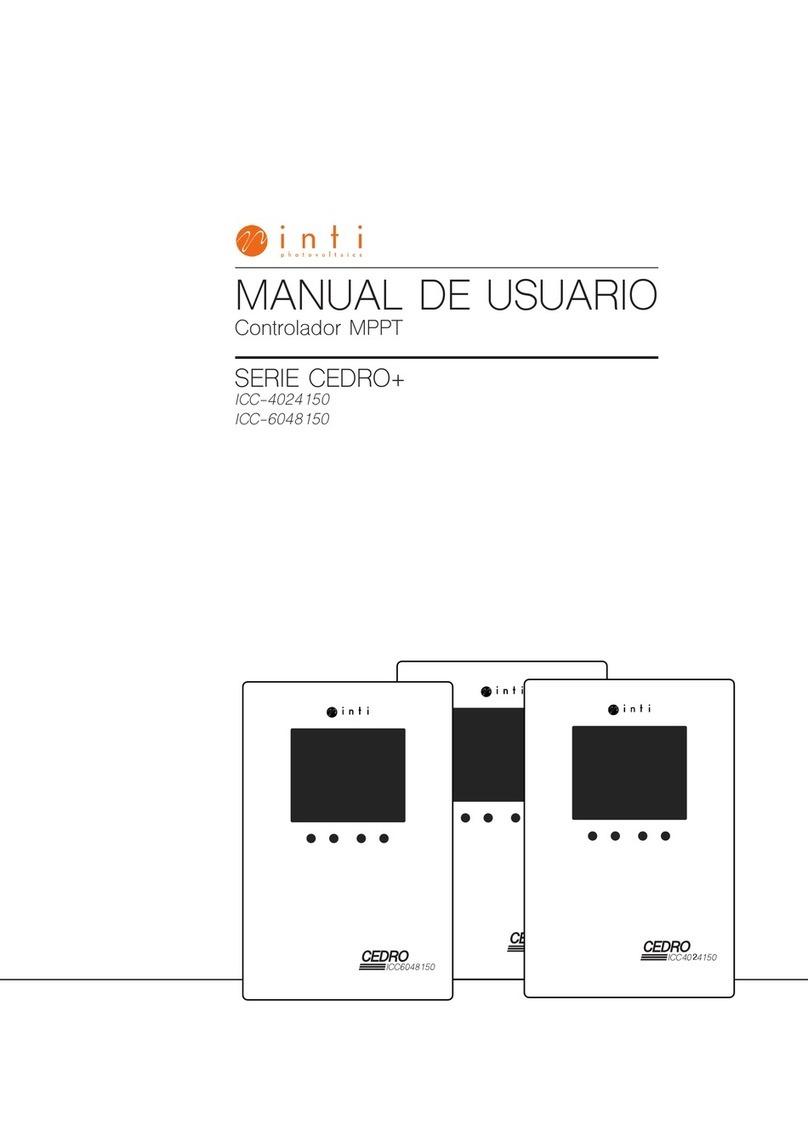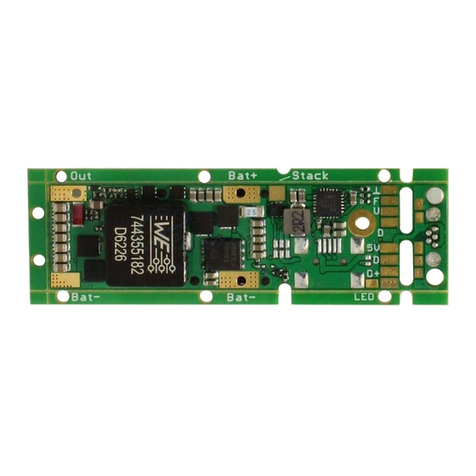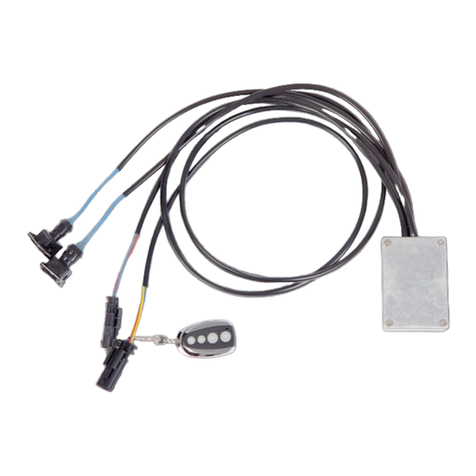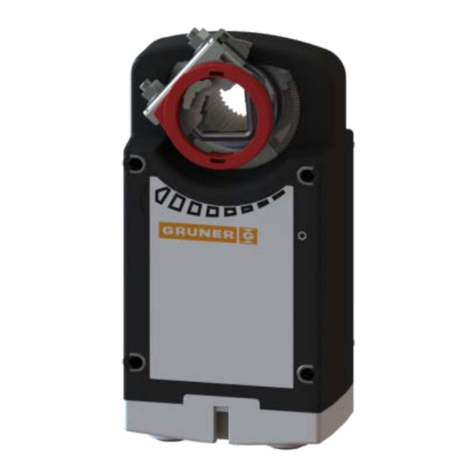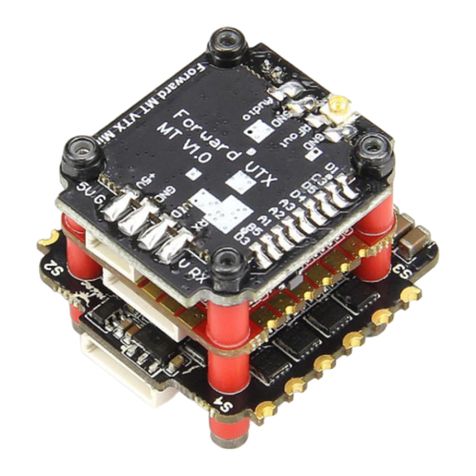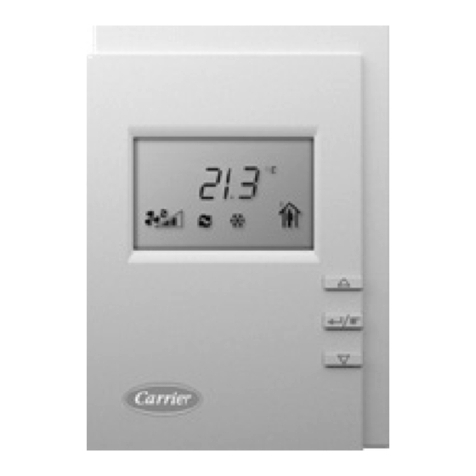inti CEDRO Series User manual

1
Controlador
SERIE CEDRO
ICC-6048150
ICC-5048150
ICC-4048150
ICC-3048150
ICC-2048150
ICC-4024150
MANUAL DE USUARIO

2

3
INDICE
INDEX
Sobre este manual
Instrucciones de seguridad
Descripción de codigos de operación
Voltaje del sistema y tipos de baterías
Instrucciones del estado de operación
Características
Lista de productos en empaque
Instrumentos de Instalación
Dimensiones
Instalación en tablero o gabinete
Instalacion sobre pared
Conexión en serio de paneles solares
Voltaje de salida de carga DC y máxima corriente
de descargue
Descripción del puerto de comunicaciones
Operación
Pantalla LCD
Botones de operación
Solución de problemas comunes
Parámetro técnicos
About this manual
Safety instructions
Operation fault codes description
System voltage and battery types
Working status instructions
Features
Products included on the packing
Installation Instructions
Dimensions
Mounting
Serial connections (strings) of solar panels
DC load output voltage and maximum discharge
current
Communication port description
Operation
LCD screen description
Operation buttons: PV, BAT/up, DC/down, S
Common fault troubleshooting
Technical parameters
4
4
5
5
6
6
6
7
7
7
8
8
8
9
9
9
10
10
11
12
12
13
13
14
14
14
15
15
15
16
16
17
17
17
18
18
19

4
Instrucciones importantes de seguridad. Por favor mantenga este manual para referencias futuras. Por favor, lea las instrucciones y
precauciones del manual cuidadosamente antes de la instalación.
Este manual contiene todas las regulaciones e instrucciones de seguridad, instalación y operación de los controladores de carga solar Inti
Cedro.
Este capítulo contiene importantes instrucciones de seguridad y operación.
Lea y conserve este manual para futuras consultas.
Instale el controlador en un sitio con ventilación. La temperatura de la carcasa del controlador se puede calentar durante la operación
del equipo. Por favor, no toque la carcasa metálica del equipo directamente para evitar quemaduras.
Se recomienda conectar un fusible o breaker a la entrada del equipo, la salida de carga y los terminales de la conexión de las
baterías para prevenir shock eléctrico durante el uso del equipo.
Después de la instalación, chequee todas las conexiones de cableado para prevenir daños de calentamiento causados por una
conexión errada.
Si el controlador no muestra un funcionamiento correcto en el primer uso de este, por favor corte todos los fusibles o breakers
inmediatamente y chequee si el cableado de conexión está correcto.
Si el sistema solar necesita conectar un inversor a él, por favor conecte el inversor directamente a la batería en vez de al terminal de
carga del controlador.
No desconecte la batería cuando el controlador está cargando, puede dañar la carga DC si lo hace.
1.
2.
3.
4.
5.
6.
SOBRE ESTE MANUAL
INSTRUCCIONES DE SEGURIDAD
¡PRECAUCIÓN!
MANUAL DE USUARIO CONTROLADOR CEDRO ICC-6048150 / ICC-5048150 / ICC-4048150 / ICC-3048150 / ICC-2048150 / ICC-4024150 www.intipv.com

5
DESCRIPCIÓN DE CÓDIGOS DE OPERACIÓN EN FALLA
VOLTAJE DEL SISTEMA Y TIPOS DE BATERÍAS
Código Descripción
001 Sobre voltaje de la batería
002 Sobre voltaje FV
004 Sobre carga
008 Sobre descarga
010 Sobre temperatura de batería
020 Sobre temperatura interna
040 Polaridad FV invertida
080 Polaridad de batería invertida
011 Cortocircuito en carga
012 Sobre potencia de carga
El controlador identifica el voltaje del sistema de acuerdo con el voltaje de arranque de la batería, también puede volver a identificar el voltaj
del sistema cuando se apaga y reinicia el equipo. Por favor asegúrese de que el voltaje del sistema mostrado en el controlador es consistente
con el voltaje real del sistema, de modo contrario, revise el voltaje total del banco de baterías.
El controlador tiene 6 tipos de parámetros convencionales de carga de baterías convencionales. El controlador puede identificar voltajes de
12V. 24V o 48V dependiendo del modelo del equipo.
Tipo de batería Voltaje de la
batería
Voltaje BST
Flooded (FLD) Automático 14,6V
Sellada (SEL) Automático 14,4V
Gel (GEL) Automático 14,2V
Usuario (USE) Automático/
12/24/48V
14,2V
Ion Litio (LI)
Voltaje FLD
13,8V
13,8V
13,8V
13,8V
Voltaje BST
13,2V
13,2V
13,2V
13,2V
Voltaje BST_R
12,6V
12,6V
12,6V
12,6V
11,0V
11,0V
11,0V
11,0V
Desconexión
por bajo voltaje
12/24/48V 14,2V -- -- 12,6V 11,0V
MANUAL DE USUARIO CONTROLADOR CEDRO ICC-6048150 / ICC-5048150 / ICC-4048150 / ICC-3048150 / ICC-2048150 / ICC40-24150
www.intipv.com

6
LISTA DE PRODUCTOS EN EL EMPAQUE
CARACTERÍSTICAS
1. Pantalla
2. Interruptor e indicador de operación
3. Conector de tierra
4. Puerto sensor de temperatura de batería
5. Puerto de comunicación RS485
6. Terminales positivo y negativo de paneles (PV), batería y carga.
7. Disipador de calor
8. Panel de vidrio
9. Cubierta trasera de caja de conexión
El usuario puede identificar el estado de operación actual del controlador de acuerdo con el indicador led cuando la pantalla del
controlador está apagada:
Indicador Led Instrucción
El primer led está siempre encendido (A) Standby
Todos los leds intermitentes Precaución de error
Tres leds prendidos secuencialmente (ABC) Carga
El cuarto led siempre encendido (D) Indicadores de carga
INSTRUCCIONES DEL ESTADO DE OPERACIÓN
Descripción Cantidad
Producto Controlador MPPT 1 unidad
Accesorios Placa de montaje 1 unidad
Cable sensor de temperatura 1 unidad
Tornillos M4 (para placa de montaje) 2 unidades
Tornillos M4 (para controlador) 4 unidades
Unidades plásticas de expansión 2 unidades
Información Manual de usuario 1 unidad
Opcional Cable RS485 USB 1 unidad
Módulo de comunicación WIFI externo 1 unidad
MANUAL DE USUARIO CONTROLADOR CEDRO ICC-6048150 / ICC-5048150 / ICC-4048150 / ICC-3048150 / ICC-2048150 / ICC-4024150 www.intipv.com

7
INSTRUCCIONES DE INSTALACIÓN
DIMENSIONES
INSTALACIÓN
INSTALACIÓN EN TABLERO O GABINETE
TALADRE 4 HOYOS DE Φ4MM DE ACUERDO CON LAS MEDIDAS DEL CONTROLADOR Y FIJE EL EQUIPO CON
LOS TORNILLOS M4 DESDE LA PARTE TRASERA.
PASO 1 PASO 2
PASO 3
MANUAL DE USUARIO CONTROLADOR CEDRO ICC-6048150 / ICC-5048150 / ICC-4048150 / ICC-3048150 / ICC-2048150 / ICC-4024150
www.intipv.com

8
INSTALACIÓN SOBRE PARED:
MIDA Y MARQUE LAS DISTANCIAS REFERENTES A LAS MEDIDAS DEL
CONTROLADOR EN LA PARED, TALADRE HOYOS DE Φ6MM, INSERTE LAS
UNIDADES PLÁSTICAS EXPANSIVAS Y ASEGÚRELAS.
ALINEE LOS HOYOS DE LA PLACA DE MONTAJE
CON LOS HOYOS DE LA PARED Y ASEGÚRELOS
CON TORNILLOS M5.
CUELGUE EL CONTROLADOR EN LA
PLACA DE MONTAJE.
ASEGURE Y FIJE EL CONTROLADOR A LA PLACA DE
MONTAJE CON LOS TORNILLOS M4 CORRESPONDIENTES.
NOTA
Los pasos de montaje arriba mencionados aplican para
instalación de pared en general. Si se instalan los equipos pared
de madera, use tornillos autorroscantes para instalar la placa
directamente.
Sea precavido con la posición de instalación del controlador,
mantenga el espacio de 20cm arriba y abajo del equipo para una
ventilación y disipación de calor apropiada.
La temperatura ambiente en el lugar de la instalación debe estar
entre -20ºC y 50ºC, de lo contrario, el controlador puede no
trabajar correctamente.
PASO 1
PASO 3 PASO 4
PASO 2
CONEXIÓN EN SERIE DE PANELES SOLARES
VOLTAJE DE SALIDA DE CARGA DC Y MÁXIMA CORRIENTE DE DESCARGA
Voc * N = PVinput < 150Vdc
Voltaje del
sistema
Voc<23V Voc<31V Voc<34V Voc<38V Voc<46V Voc<62V
Máx. Mejor Máx. Mejor Máx. Mejor Máx. Mejor Máx. Mejor Máx. Mejor
12V 6 2 4 1 4 1 3 1 3 1 2 1
24V 6 3 4 2 4 2 3 2 3 2 2 1
36V 6 4 4 3 4 3 3 3 3 2 2 1
48V 6 5 4 4 4 3 3 3 3 2 2 2
El controlador tiene función de salida de CARGA DC, y su rango de voltaje de salida es el mismo que el del banco de baterías. Por ejemplo,
si el voltaje de la batería es 25,2Vdc, el voltaje de salida DC instantáneo, también será 25,2Vdc.
El controlador Cedro puede suministrar potencia a la carga DC de forma continua si la corriente de la carga DC está dentro del rango
nominal del equipo.
Definición Descripción
0 El voltaje FV enciende el interruptor de carga con el tiempo de retraso de control de luz
1-14 El voltaje FV enciende y apaga el interruptor de carga con el tiempo configurado
Apaga y enviende la carga usando el botón "S"
Enciende la carga inmediatamente sin retraso y luego la apaga.
Interruptor de control de luz
Control de tiempo + luz
Interruptor manual
Interuptor de pruebas
Siempre encendido La carga está encendida hasta que se desconecta por bajo voltahe en la batería.
Modo
15
16
17
MANUAL DE USUARIO CONTROLADOR CEDRO ICC-6048150 / ICC-5048150 / ICC-4048150 / ICC-3048150 / ICC-2048150 / ICC-4024150 www.intipv.com

9
DESCRIPCIÓN DEL PUERTO DE COMUNICACIONES
OPERACIÓN
El puerto de comunicación del controlador es compatible con comunicación RS485-USB para monitoreo en tiempo real a través del computador
y/o de un módulo wifi (opcional) para ser monitoreado a través de la nube con una aplicación. El puerto de comunicación es una interfaz estándar
RJ45 de 8 pines definidos en la siguiente tabla
NOTA
La definición de los pines es aplicable solamente a nuestros controladores Cedro
Cuando la salida de la carga se apaga debido a que ha entrado en acción algún mecanismo de protección, la interfaz de salida de
contacto seco se encenderá (baja impedancia).
El controlador tiene puertos de comunicación RS485 duales. Se puede usar para conexiones en paralelo y para comunicación.
Si se necesita monitorear múltiples controladores de forma central, por favor configure la dirección del controlador (1-254). Por
ejemplo, se conectan 5 controladores en paralelo y se usa un monitoreo central, configure las direcciones de los controladores
como 1,2,3,4 y 5.
Si quiere monitorear múltiplos controladores en comunicación Maestro-Esclavo, configure la dirección del controlador Maestro en
255. Por ejemplo, se conectan 5 controladores en paralelo, configure el controlador Maestro como 255.
1. Información FV
2. Información de la batería
3. Información de carga DC
4. Estado de carga
5. Modo de trabajo
6. Información del sistema
PIN Función
1 RS485-A
2 RS485-B
3 Contacto seco
4 Contacto seco
5 Tierra
6 Tierra
7 +5V (No aislado)
8 +5V (No aislado)
PANTALLA LCD
MANUAL DE USUARIO CONTROLADOR CEDRO ICC-6048150 / ICC-5048150 / ICC-4048150 / ICC-3048150 / ICC-2048150 / ICC-4024150
www.intipv.com

10
BOTONES DE OPERACIÓN - PV, BAT/up, DC/down, S
SOLUCIÓN DE PROBLEMAS COMUNES
Botón Información Accesible Función de modo
PV Voltaje FV / Corriente FV / Potencia FV /
Energia total FV
BAT/up Batería: voltaje / corriente / potencia / porcen-
taje de carga / temperatura / tipo / dirección
del equipo.
Hacia arriba / incremento
BAT/down Carga: voltaje / corriente / potencia / energía
total / modo de trabajo
Hacia abajo / decremento
Botón Modo Ítems de configuració
SConfiguración S01: Tipo de batería → USER/SEL/FLD/GEL/LIT
S02: Dirección del dispositivo
S03: Modo de carga → 0-17
S04: Temperatura batería → ºC / ºF
S05: Voltaje del sistema
S06: Voltaje de carga BST
S07: Voltaje de carga FLD
S08: Voltaje BST_R Disponibles para
Li-ion y USER
S09: Recuperación por bajo voltaje
S10: Protección por sobre voltaje
S11 – S12: Con iguración en tiempo real
S13 – S14: Con iguración de datos
Problema Posible causa Solución
El controlador no arranca, la pantalla no enciende. Conexión invertida de positivo y negativo de batería. Chequee el cableado, conecte en el orden correcto.
El controlador no carga, no detecta el voltaje FV. Conexión invertida de cables negativo y positivo de
los paneles.
Chequee el cableado, conecte en el orden correcto.
Intercambio de modos Standby y CC en forma
circular.
Voltaje FV muy pequeño, número de paneles en
serie insuficientes
El voltaje Vmpp debe ser mayor al voltaje de
la batería Vbat. Por favor revise los esquemas
propuestas en serie paralelo (tabla 5)
Clima nublado, muy temprano en la mañana o al
anochecer.
Fenómeno natural.
Configuración incorrecta de paneles solares Suponiendo que tenga suficiente potencia en los
paneles, por favor revise la tabla de esquemas
serie-paralelo propuestos (Tabla 5)
El controlador está encendido el voltaje FV está
normal, pero no carga.
El controlador no reconoce el voltaje de la batería
del sistema.
Chequee si el voltaje de la batería con una pinza
y en la pantalla LCD están dentro del rango de
reconocimiento del controlador.
La batería tiene poca energía o está vacía por un
largo período de tiempo.
La cantidad de paneles solares que se usa es muy
pequeña para generar suficiente energía
Incremente la cantidad de paneles solares.
La capacidad de la batería es muy pequeña para
almacenar la energía generada.
Incremente la capacidad de la batería.
Operación
Presione por 3
segundos
Instrucciones
de operación
Salir del modo
Configuración
Presione y
libere
Cambie S01-
S14
Normal Presione por 3
segundos Entrar al modo
Configuración
Presione y
libere
Carga on/off
(modo carga:15)
--
MANUAL DE USUARIO CONTROLADOR CEDRO ICC-6048150 / ICC-5048150 / ICC-4048150 / ICC-3048150 / ICC-2048150 / ICC-4024150 www.intipv.com

11
PARÁMETROS TÉCNICOS
Modelo ICC-2048150 ICC-3048150 ICC-4024150 ICC-4048150 ICC-5048150 ICC-6048150
Eficiencia MPP ≥99,5%
Consumo en standby 0,2W
Método de disipación de calor Refrigeración natural
Rango admisible de voltaje fotovoltaico 12V 8VDC-15VDC (plomo ácido)
24V 18VDC-32VDC (plomo ácido)
Ion litio 8VDC-30VDC (predeterminado), ≤30VDC (opcional)
Rango admisible de voltaje fotovoltaico 0VDC - 150VDC
Voltaje mínimo Vmpp Voltaje de batería +2V
Voltaje de arranque de carga Voltaje de batería +3V
Protección de bajo voltaje de entrada Voltaje de batería +2V
Protección de sobrevoltaje 150VDC
Recuperación de sobrevoltaje 145VDC
Potencia FV nominal 12V 260W 390W 520W 520W 650W 780W
24V 520W 780W 1040W 1040W 1300W 1680W
Ion litio 252W-504W 378W-756W 504W-1008W 504W-1008W 630W-1260W 756W-1680W
Activación de batería de litio Opcional
Tipos de batería (GEL predeterminado) Sellada (SEL), Gel (GEL), Floaded (FLD), Definido por el usuario (USE), Ion litio (Lit
Corriente de carga nominal 20A 30A 40A 40A 50A 60A
Compensación de temperatura -3mV/ºC/2V (predeterminado)
Método de carga 3 etapas: CC (Corriente constante), CV (Voltaje constante), CF (Carga de flotación
Precisión de estabilidad de salida de
voltaje
≤±0,2V
Voltaje de carga Mismo que el voltaje de la batería
Corriente de carga nominal 20A 40A
Modo de control de carga
Protección de bajo voltaje
Método de configuració
Interruptor de control de carga, Control Tiempo + Luz, Interruptor Manual, Interruptor de Pruebas, Siempre encendido.
10,5V (predeterminado), 11V (restaurado), configurado
Software PC / Aplicación / Controlador
Pantalla Pantalla LCD de alta definición con código de segmento y luz de fondo
Comunicación RJ45 puerto dual / protocolo RS485 / PC (vía RS485-Cable USB) y Aplicación (vía módulo WIFI) / Monitoreo centralizado
(conexión en paralelo y cable RS485-USB)
Protección Sobre voltaje de entrada y salida, protección de bajo y alto voltaje de batería, protección de polaridad inversa, protección de
alta y baja temperatura, protección de cortocircuito, protección de sobrecorriente fotovoltaica..
Temperatura ambiente de operación -25ºC – +55ºC
Temperatura de almacenamiento -25ºC – +70ºC
Protección IP IP43
Ruido ≤10Db
Altitud 0-300m
Máximo tamaño del cableado 28mm2
Breaker recomendado ≥40A ≥63A ≥63A ≥63A ≥100A ≥100A
Peso neto / peso grueso (kg) 1,7 / 2,03 2,4 / 2,83
Dimensiones del empaque 289 * 212 * 105 mm 334 * 255 * 123 mm
Dimensiones del producto 220 * 148 * 58,8 mm 245 * 170 * 68,5 mm
*Información de especificaciones técnicas bajo condiciones de prueba en laboratorio: 25ºC, 1000msnm, RH 55%
MANUAL DE USUARIO CONTROLADOR CEDRO ICC-6048150 / ICC-5048150 / ICC-4048150 / ICC-3048150 / ICC-2048150 / ICC-4024150
www.intipv.com

12
Important safety instructions. Please keep this manual for future reference. Please read all instructions and precautions in the manual carefully
before installation.
This manual contains all the safety, installation and operation instructions of the Inti Cedro controller series.
KEEP THIS MANUAL FOR FURTHER QUESTIONS
Install the controller in a properly ventilated place. The controller’s case temperature might be very high during operation. Please don’t
touch the metal Shell of the controller directly to prevent any possible burn.
Connecting fuses or circuit breakers to the input, load and battery terminals is highly recommended to prevent electric shock hazard
during the operation.
After the installation, check all wiring connections are secure in order to avoid danger of heat build-up caused by poor connections.
If the controller does not display properly when used the first time, please turn o f the fuse or circuit breaker immediately and check
whether the wiring connections are correct.
If the solar system includes an inverter, please connect the inverter directly to the battery, not to the load terminal of the controller.
Do not disconnect the battery when the controller is charging, or it may damage the DC load connected to it.
1.
2.
3.
4.
5.
6.
ABOUT THE USER MANUAL
SAFETY INSTRUCTIONS
CEDRO CONTROLLER ICC-6048150 / ICC-5048150 / ICC-4048150 / ICC-3048150 / ICC-2048150 / ICC-4024150 USER MANUAL www.intipv.com

www.intipv.com 13
OPERATION FAULT CODES DESCRIPTION
SYSTEM VOLTAGE AND BATTERY TYPES
Code Description
001 Batter overvoltage
002 PV overvoltage
004 Overcharging
008 Over-discharging
010 Battery over-temperature
020 Internal over-temperature
040
080
The controller identifies the system voltage according to the battery voltage at start-up of the batter , it can also re-identify the system voltage
when it is restarted. Please ensure the voltage displayed in the controller is consistent with the actual voltage, otherwise please check the
battery bank voltage.
Battery type
Flooded (FLD) AUTO 14,6V
Sealed (SEL) 14,4V
Gel (GEL) 14,2V
User (USE) 14,2V
PV polarity reversed
Battery polarity reversed
011
012
Load short circuit
Load over-power
The controller has 6 types of conventional battery charging parameters. The controller can identify 12V/24V/48V depending on the model of
the Cedro controller.
Ion Lithium (LI)
Battery Voltage FLD Voltage BST_R Voltage LRV Voltage LDV Voltage
14,2V
AUTO
AUTO
AUTO
12/24/36/48V
12/24/36/48V
13,8V 13,2V 12,6V 11,0V
13,8V 13,2V 12,6V 11,0V
12,6 11,0V
-- --
BST Voltage
CEDRO CONTROLLER ICC-6048150 / ICC-5048150 / ICC-4048150 / ICC-3048150 / ICC-2048150 / ICC-4024150 USER MANUAL

14
PRODUCTS INCLUDED ON THE PACKING
FEATURES
1. Display
2. Touch switch and led status indicator.
3. Ground connector
4. Battery temperatura sensing port.
5. RS485 communication port.
6. PV+/-, BAT+/-, LOAD+/- terminals.
7. Shell and heat sink.
8. Glass panel.
9. Rear cover of connection box.
When the controller is off, the user can identify the working status according to the following led instructions:
Led Instruction
The rst led is always on (A) Standby
All the leds are ashing (ABCD) Error warning
Three leds turn on sequentially (ABC) Charging
The fourth led is always on (D) Load
WORKING STATUS INSTRUCTIONS
Description Quantity
Product MPPT controller 1 unit
Accesories Mounting backboard 1 unit
Temperature sensor cable 1 unit
M4 screws (for backboard mounting) 2 units
M4 screws (for controller) 4 units
Plastic expansion units 2 units
Information User manual 1 unit
Opcional USB RS485 cable 1 unit
External WIFI communication module 1 unit
CEDRO CONTROLLER ICC-6048150 / ICC-5048150 / ICC-4048150 / ICC-3048150 / ICC-2048150 / ICC-4024150 USER MANUAL www.intipv.com

15
INSTALLATION INSTRUCTIONS
DIMENSIONS
MOUNTING
MOUNTING ON BOARDS OR CABINETS
DRILL FOUR Φ4MM HOLES ACCORDING TO THE CONTROLLER’S SIZE AND THEN FIX THE CONTROLLER WITH
M4 SCREWS FROM THE BACK ON THE.
STEP 1 STEP 2
STEP 3
CEDRO CONTROLLER ICC-6048150 / ICC-5048150 / ICC-4048150 / ICC-3048150 / ICC-2048150 / ICC-4024150 USER MANUAL
www.intipv.com

16
MOUNTING ON WALL
MEASURE AND MARK THE DISTANCES ON THE WALL, DRILL Φ6MM, INSERT
PLASTIC EXPANSION PARTICLES AND TIGHTEN.
ALIGN THE HOLES OF THE MOUNTING
BACKBOARD TO THE HOLES INT HE WALL, FIX
IT WITH M5 SCREWS.
HANG THE CONTROLLER TO
THE MOUNTING BACKBOARD
ACCORDINGLY.
TIGHTEN AND FIX THE CONTROLLER TO THE MOUNTING
BACKBOARD WITH M4 SCREWS.
NOTE
The above steps are suitable for general wall installations. If the
controller is installed in a wooden wall, use self-tapping screws
to fix it directly.
Be cautious to the controller installation position, keep a 20cm
space up and down the controller for proper ventilation and heat
dissipation.
The ambient temperature of the installation place must be
between -20ºC y 50ºC, otherwise the controller might not work
properly.
STEP 1
STEP 3 STEP 4
STEP 2
SERIAL CONNECTIONS (STRINGS) OF SOLAR PANELS
DC LOAD OUTPUT VOLTAGE AND MAXIMUM DISCHARGE CURRENT
Voc * N = PVinput < 150Vdc
System voltage Voc<23V Voc<31V Voc<34V Voc<38V Voc<46V Voc<62V
Max. Best Max. Best Max. Best Max. Best Max. Best Max. Best
12V 6 2 4 1 4 1 3 1 3 1 2 1
24V 6 3 4 2 4 2 3 2 3 2 2 1
36V 6 4 4 3 4 3 3 3 3 2 2 1
48V 6 5 4 4 4 3 3 3 3 2 2 2
The controller has DC load output function, and its output voltage range is the same as the battery bank. For example, if the battery voltage is
25,2Vdc, then the instantaneous output DC voltage will also be 25,2Vdc.
The Cedro controller can supply DC load continuously if the DC load current is within the nominal range of the controller.
Mode Definition
Light switch control
1~14 Light+time control
15
16
17
0
Manual switch
Testing switch
Always on
Description
The PV voltage turns on the load switch according to light control delay.
The PV voltage turns on and shuts down the load switch according to settings.
Turns on/off the load by pressing the “S” button
Turns on the load immediately with no delay and then turns off.
The load keeps on until the battery low voltage disconnects.
CEDRO CONTROLLER ICC-6048150 / ICC-5048150 / ICC-4048150 / ICC-3048150 / ICC-2048150 / ICC-4024150 USER MANUAL www.intipv.com

17
COMMUNICATION PORT DESCRIPTION
OPERATION
The communication port of the controller is compatible with RS485-USB communication for real time monitoring by the PC software of through a
WIFI module (optional) so it can be monitored though the app. The communication port is a standard 8 pin RJ45 interface and the pins are defined
below:
REMARKS
The pin definition only applies to our Cedro controllers
When the load output turns off due to the triggering protection mechanism, the dry contact output interface will turn on (low
impedance).
The controller has dual RS485 communication ports and that can be used for communication and parallel connection.
If it is required to centrally monitor multiple controllers, please set the controllers address (1-254) accordingly. For example: 5
controllers in a parallel connection and with central monitoring will have the controllers’ address order as 1,2,3,4 and 5.
If it is required to centrally monitor multiple controllers as a Master-Slave communication, please set the Master controller address
to 255. For example: 5 controllers in a parallel connection and with central monitoring will just need to set the Master controller’s
address as 255
.
1. PV information
2. Battery information
3. DC load information
4. Load status
5. Working mode
6. System information
PIN Función
1 RS485-A
2 RS485-B
3 Dry contact
4 Dry contact
5 GND
6 GND
7 +5V (Non-Isolated)
8 5V (Non-Isolated)
LCD SCREEN DESCRIPTION
CEDRO CONTROLLER ICC-6048150 / ICC-5048150 / ICC-4048150 / ICC-3048150 / ICC-2048150 / ICC-4024150 USER MANUAL
www.intipv.com

18 www.intipv.com
OPERATION BUTTONS: PV, BAT/UP, DC/DOWN, S
COMMON FAULT TROUBLESHOOTING
Button Accessible information Setup mode
PV PV voltage / PV current / PV power / Total PV
energy
BAT/up Battery: voltage / current / power / load percen-
tage / temperature / type / device address
Up / increase
BAT/down Load: voltage / current / power / total energy /
working mode
Down / decrease
Button Operation instructions Configuration item
S
Problem Possible reason Solution
The controller doesn’t startup, the screen is off. Battery positive and negative reverse connection. Check the wiring, reconnect properly.
The controller doesn’t load, the PV voltage is
undetectable.
Reverse connection of the positive and negative
cables of solar panels.
Check the wiring, reconnect properly.
Switching from Standby and continuous mode in
circular manner.
PV voltage too low, series panels voltage insuf-
cient.
The Vmpp voltage must be higher than the battery
voltage Vbat. Please review the schematics propo-
sed in this manual.
Cloudy day, too early in the morning or at dawn. Normal phenomenon.
Incorrect solar panels connection. Based that the PV power supply is enough, please
review the series-parallel schematics proposed
above.
The controller is on, the PV voltage is normal, but
the controller doesn’t charge.
The controller doesn’t recognize the voltage battery
system.
Check the battery voltage with a clamp, compare
it with the LCD information and and confirm that
ir is within the operation range of the controller.
The battery has low energy, or it is empty for a long
period of time.
The number of solar panels is too low to generate
the required energy.,
Increase the number of solar panels.
The battery capacity is too small to storage the
generated Energy.
Increase the battery capacity.
S01: Battery type → USER/SEL/FLD/GEL/LI
S02: Device address
S03: Load mode -> 0~17
S04: Battery temp-> ºC / ºF
S05: System-volt
S06: BST Charge volt
S07: FLD Charge volt
S08: BST-Return volt
S09: Under-volt recovery volt
S10: Under-volt protection volt
S11 – S12: Realtime set
S13 – S14: Data set
Available
for Li-ion
or USER
Operation
Mode
Setup Press for 3
seconds
Press and
release
Exit Setup Mode
Normal
Change S01~S04
Enter Setup Mode
Press for 3
seconds
Press and
release
On/off load(load
mode:15) --
CEDRO CONTROLLER ICC-6048150 / ICC-5048150 / ICC-4048150 / ICC-3048150 / ICC-2048150 / ICC-4024150 USER MANUAL

19
TECHNICAL PARAMETERS
Model ICC-2048150 ICC-3048150 ICC-4024150 ICC-4048150 ICC-5048150 ICC-6048150
MPPT efficiency ≥99,5%
Standby consumption
Heat dissipation method Natural cooling
Battery system voltage range 12V 8VDC-15VDC (lead acid)
24V 18VDC-32VDC (lead acid)
Li-ion 8VDC-30VDC (default), ≤30VDC (optional)
Admissible PV range 0VDC - 150VDC
Vmpp minimum voltage Battery voltage +2V
Startup charging voltage Battery voltage +3V
Low input voltage protection Battery voltage +2V
Overvoltage protection 150VDC
Overvoltage recovery protection 145VDC
Rated PV power 12V 260W 390W 520W 520W 650W 780W
24V 520W 780W 1040W 1040W 1300W 1680W
Li-ion 252W-504W 378W-756W 504W-1008W 504W-1008W 630W-1260W 756W-1680W
Lithium battery activation Optional
Battery type (default GEL) Sealed (SEL), Gel (GEL), Floaded (FLD), User defined (USE), Li Ion (Lit
20A 30A 40A 40A 50A 60A
Temperature compensation -3mV/ºC/2V (default)
Charging method 3 steps: CC (constant current), CV (constant voltage), CF (floating charge
Output voltage stability accuracy ≤±0,2V
Load voltage Same voltage as battery
Rated charging current 20A
Load control mode
Low voltage protection 10,5V (default), 11V (restored), settable
Communication RJ45 dual port / RS485 protocol / PC (RS485-Cable USB) and App (WIFI module) / Central monitoring (parallel connection and
RS485-USB cable)
Protections Input and output overvoltage, low and high battery voltage, reverse polarity protection, low and high temperature protection,
short-circuit protection, PV overcurrent protection.
Setting method PC Software / App / Controller
Display High definition LCD segment code backlight display.
Operating ambient temperature -25ºC – +70ºC
Storage temperature -25ºC – +70ºC
IP protection IP43
Noise ≤10Db
0-300m
Altitude
Maximum wiring size 28mm2
Recommended breaker ≥40A ≥63A ≥63A ≥63A ≥100A ≥100A
Net weight / gross weight (kg) 1,7 / 2,03 2,4 / 2,83
289 * 212 * 105 mm 334 * 255 * 123 mm
220 * 148 * 58,8 mm 245 * 170 * 68,5 mm
*Technical specifications under laboratory test conditions: 25ºC, 1000msnm, RH 55%
Product dimensions
Packaging dimensions
Light switch control,Light + Time control,Manual switch,Testing switch,Always on
40A
0,2W
Rated load current
CEDRO CONTROLLER ICC-6048150 / ICC-5048150 / ICC-4048150 / ICC-3048150 / ICC-2048150 / ICC-4024150 USER MANUAL
www.intipv.com

20
info@intipv.com
www.intipv.com
Barcelona, España.
This manual suits for next models
6
Table of contents
Languages:
Other inti Controllers manuals
Popular Controllers manuals by other brands
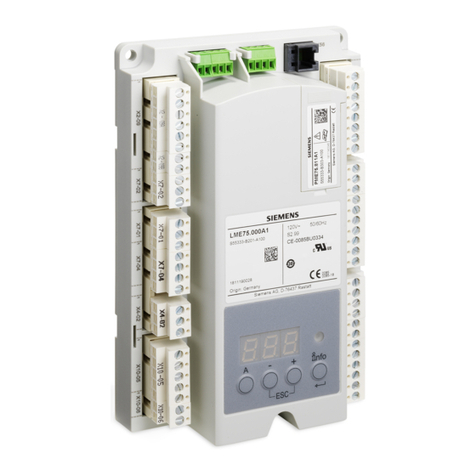
Siemens
Siemens LME7 Series Technical instructions
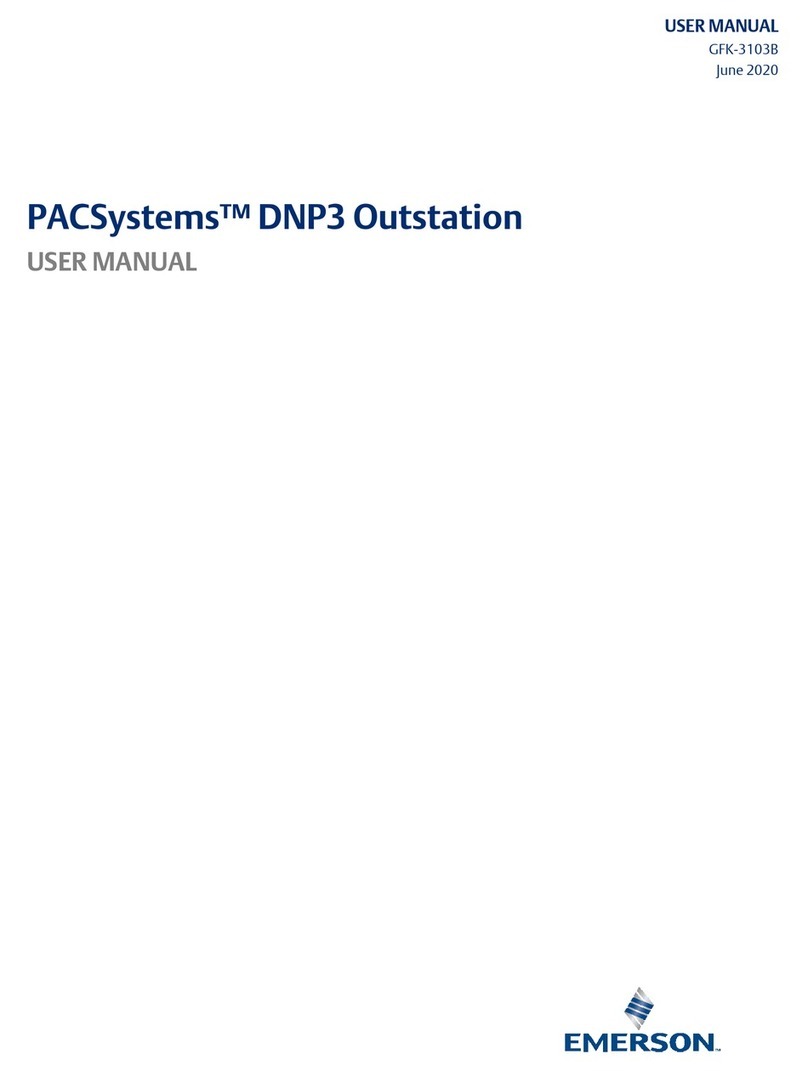
Emerson
Emerson PACSystems RX3i DNP3 user manual
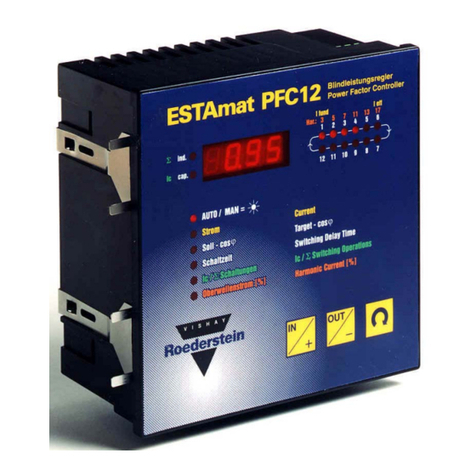
Vishay
Vishay ESTAmat PFC Mounting instructions
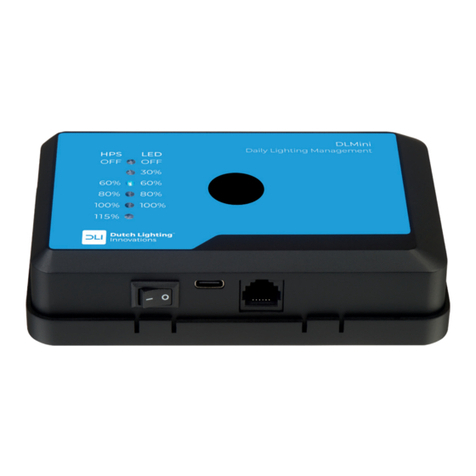
Dutch Lighting Innovations
Dutch Lighting Innovations DLIMini installation manual

Crest Audio
Crest Audio Sync Condensing Boiler 1.5 instructions
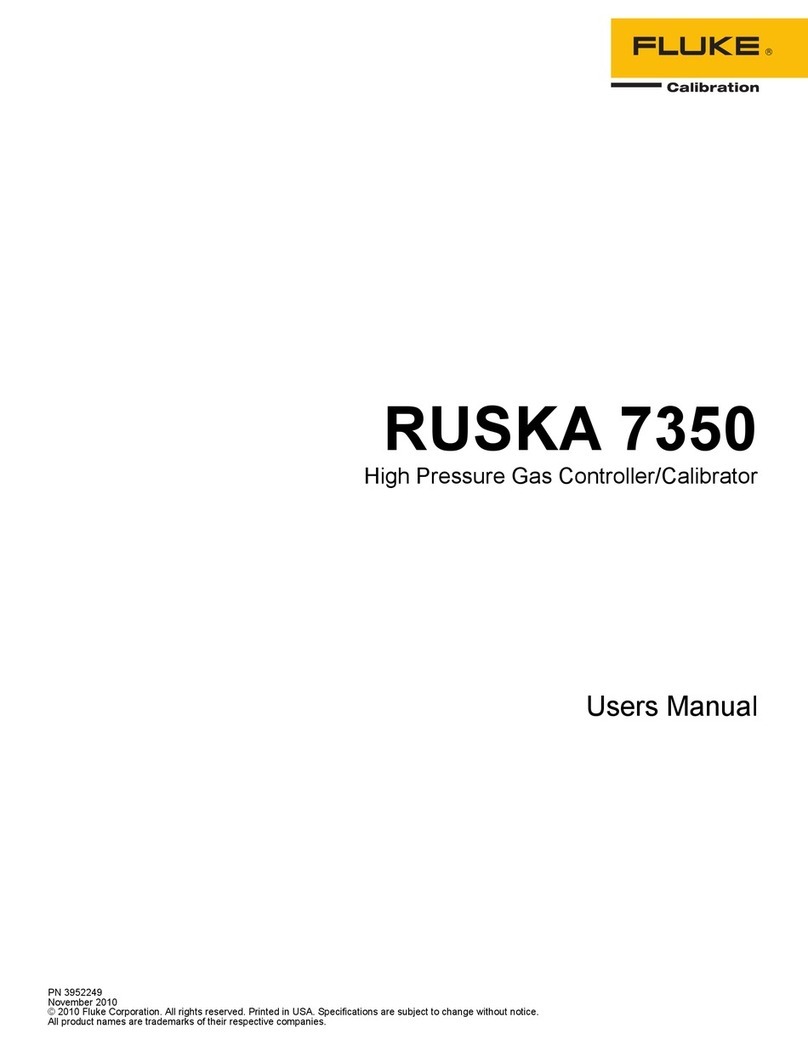
Fluke
Fluke RUSKA 7350 user manual
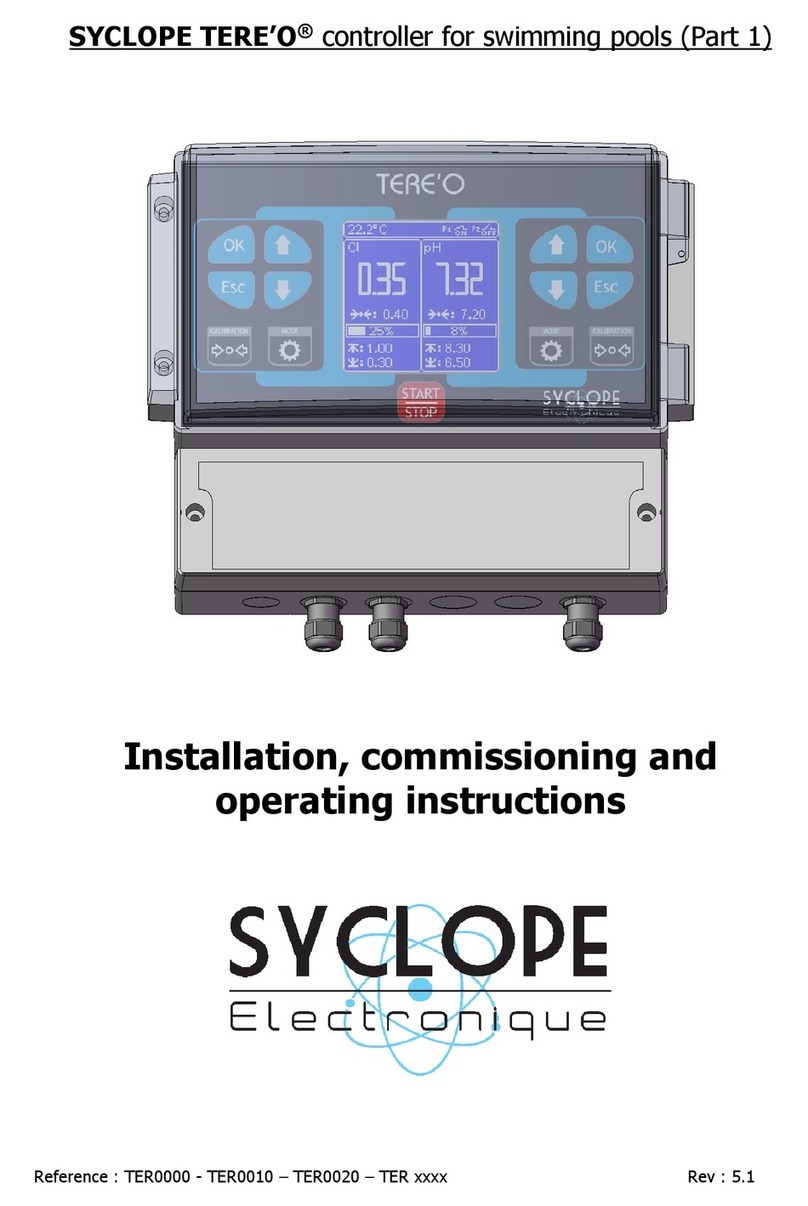
SYCLOPE
SYCLOPE TERE'O operating instructions
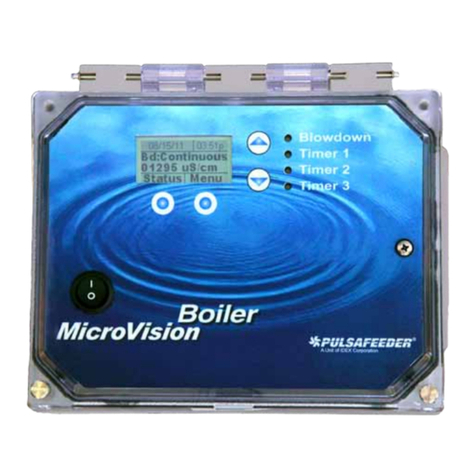
Idex
Idex Pulseafeeder MicroVision Boiler Installation & operation manual
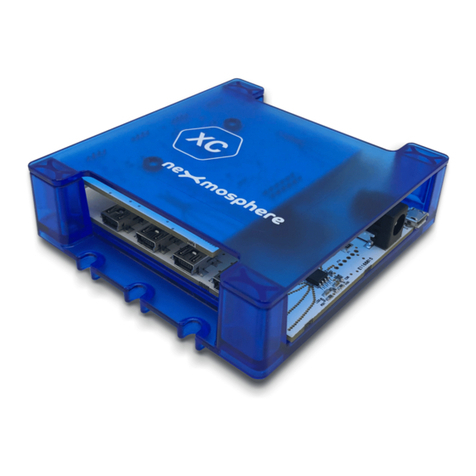
Nexmosphere
Nexmosphere XC-760 quick start guide
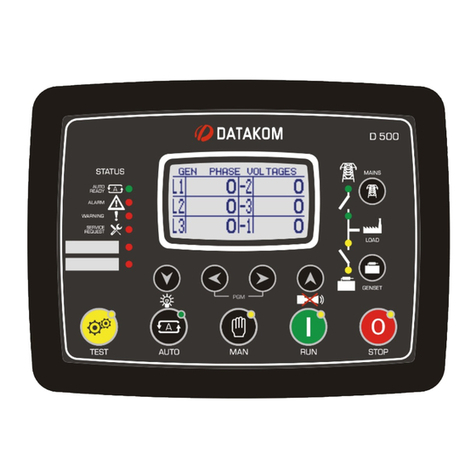
Datakom
Datakom D-500 user manual
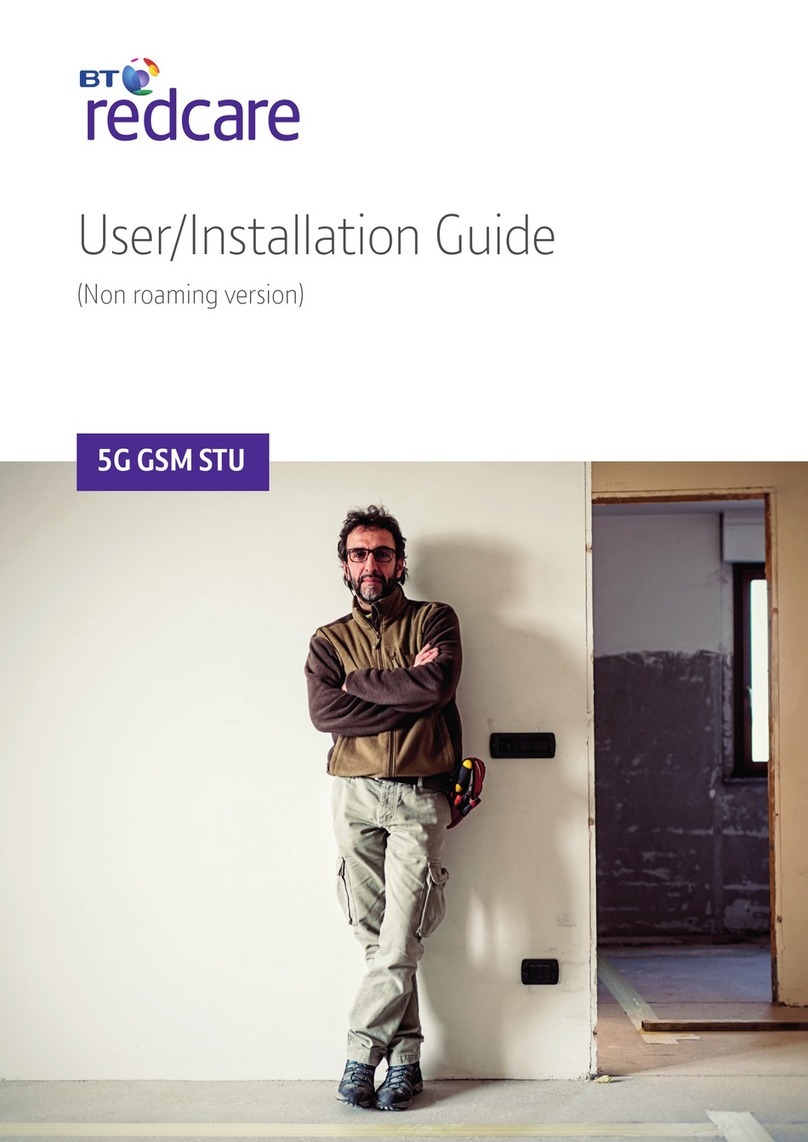
BT Redcare
BT Redcare 5G GSM STU User's installation guide
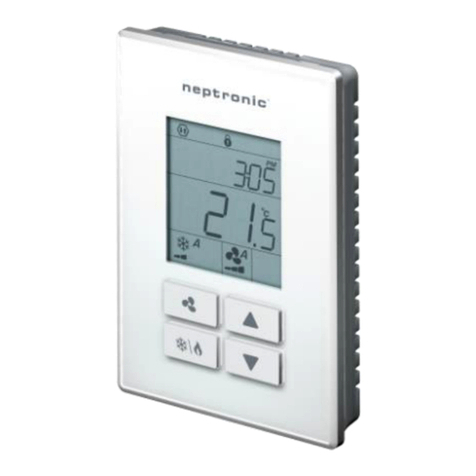
Neptronic
Neptronic TSUB00 Series Specification and installation instructions
